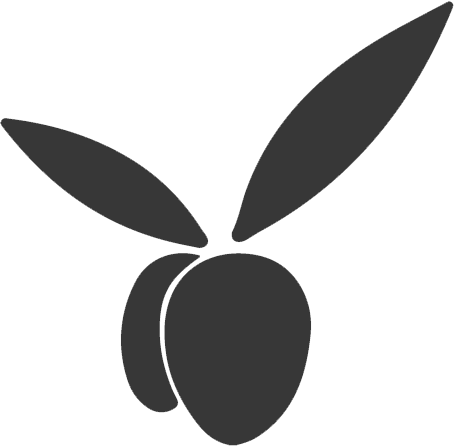
La Toscana è una delle regioni italiane più importanti per la produzione di tartufi. La raccolta riguarda principalmente il tartufo bianco (Tuber magnatum Pico), il più pregiato, e in misura minore altre specie presenti in diverse aree del territorio regionale, come il tartufo marzuolo (Tuber borchii Vitt.), il tartufo scorzone (Tuber aestivum Vitt.), il tartufo uncinato (Tuber uncinatum Chatin), il tartufo nero pregiato (Tuber melanosporum Vitt.) e il tartufo nero invernale (Tuber brumale Vitt.).
Cosa sono i Tartufi?
I tartufi sono funghi che crescono sottoterra, spesso vicino ad alberi o arbusti con cui instaurano un rapporto simbiotico, scambiando nutrienti essenziali necessari per la loro vita.
In Italia esistono oltre venticinque specie di tartufi, ma solo alcune sono commestibili e di interesse commerciale.
Dove Trovarli?
La presenza di tartufi è legata a quella di comuni specie arboree e arbustive presenti in Toscana, come querce, pioppi, salici, tigli, pini, noccioli, cisti, sia all'interno di boschi che come piante isolate o allineate. Tuttavia, ogni tartufo ha un ambiente di crescita specifico e, in generale, i tartufi più pregiati sono anche i più rari.
In Toscana, grazie alla varietà di ambienti, è possibile trovare tutte le specie di tartufi commestibili, da quelle pregiate a quelle cosiddette "minori".
La raccolta dei tartufi avviene con l'aiuto di cani addestrati appositamente.
Tartufo Bianco
- Peridio: Liscio, di colore giallo pallido, talvolta con toni verdastri o ocra.
- Gleba: Giallastra con sfumature nocciola o marrone, occasionalmente con puntini rossi, attraversata da una fitta rete di vene bianche molto sottili.
- Forma: Può essere rotonda, molto lobata o appiattita, a seconda del tipo di terreno in cui è cresciuto.
- Dimensione: Varia significativamente, con esemplari che possono pesare diverse centinaia di grammi o superare un chilogrammo.
- Periodo di maturazione: Da settembre a dicembre.
- Prezzo indicativo: Il tartufo bianco è il più pregiato per le sue qualità organolettiche; il prezzo supera in genere i 500 Euro al chilo, ma negli ultimi anni è arrivato anche a 3.000-4.000 Euro per esemplari grandi.
- In cucina: È ideale crudo su piatti caldi, che ne esaltano l’aroma intenso e penetrante senza coprirlo.
Tartufo Nero
- Peridio: Verrucoso, composto da piccole verruche nere.
- Gleba: Nero-violacea negli esemplari maturi, con sottili vene bianche che tendono a diventare rossastre all’aria e scomparire in cottura.
- Forma: Di solito arrotondata, ma anche irregolare o lobata.
- Dimensione: Variabile, da una nocciola a un'arancia.
- Periodo di maturazione: Da novembre a marzo.
- Prezzo indicativo: In media supera i 250-300 €/kg.
- In cucina: Ha un aroma dolce e sapore gustoso, perfetto per la cottura e per accompagnare piatti di carne.
Tartufo Marzuolo
- Peridio: Liscio e chiaro, da bianco-ocra a rossiccio.
- Gleba: Chiara, tendente al fulvo o marrone, con vene bianche grandi e poco numerose.
- Forma: Variabile, più arrotondata in terreni sabbiosi, talvolta irregolare con superficie bitorzoluta.
- Dimensione: Generalmente piccolo, simile a una nocciola, può raggiungere la grandezza di un uovo.
- Periodo di maturazione: Da gennaio ad aprile.
- Prezzo indicativo: Generalmente basso, tra 75 e 150 €/kg.
- In cucina: Aroma forte con toni di aglio, ideale come condimento per piatti vari, purché non sottoposto a cotture prolungate.
San Miniato e il Tartufo
Il tartufo bianco di San Miniato è riconoscibile per le sue caratteristiche uniche; la tradizione di raccolta ha oltre 100 anni. Nel 1982, grazie all'iniziativa dell'amministrazione comunale e di alcuni tartufai, è stata istituita l'Associazione Tartufai delle Colline Sanminiatesi per la "tutela, raccolta, produzione e valorizzazione del tartufo bianco di San Miniato". Oggi l'associazione, che conta oltre 400 membri, è una delle più importanti d'Italia.
La raccolta, regolamentata da normative regionali, si svolge tra ottobre e dicembre. La maturazione dei tartufi di San Miniato dura tra le 5 e le 8 settimane. La produzione annuale è stimata intorno agli 80 quintali, che può arrivare a 100 nelle stagioni più favorevoli, coprendo il 20-25% della produzione nazionale di tartufo bianco pregiato.
La Mostra Mercato Nazionale del Tartufo Bianco, che si tiene a San Miniato tra novembre e dicembre, propone ogni anno un programma ricco di iniziative per celebrare questo tesoro del territorio.

